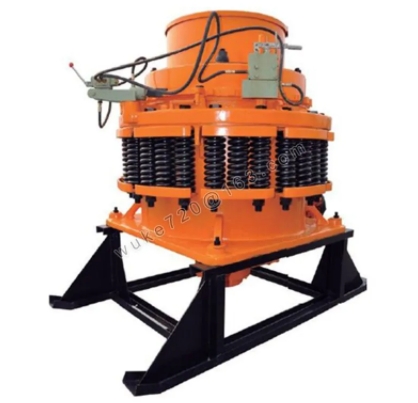Demystifying the Cone Crusher Machine: Your Guide to Understanding its Function and Benefits
Introduction
In the realm of crushing and aggregate processing, the cone crusher machine is a key player. Its significance in the construction and mining industries cannot be overstated. Yet, for those unfamiliar with this robust piece of machinery, understanding its function, advantages, and how it differs from the impact crusher can be a challenging task. In this article, we'll delve into the world of cone crushers, breaking down their operation, benefits, and how they compare to impact crushers.

What is a Cone Crusher Machine?
Definition and Function
A cone crusher machine, often simply referred to as a cone crusher, is a heavy-duty crushing equipment designed to break down large rocks, ores, and minerals into smaller, more manageable pieces. It achieves this by compressing the material between the mantle and concave, two crucial components within the machine. The cone crusher's primary function is to crush rocks by applying pressure, providing efficient and consistent reduction in size.
Working Principle
The working principle of a cone crusher is relatively straightforward. The machine's main components include:
Mantle: The mantle is the moving part of the cone crusher. It is responsible for crushing the material, typically made of wear-resistant steel.
Concave: The concave is the stationary part that the mantle presses against. Its shape plays a critical role in determining the final product size.
Eccentric Shaft: This shaft is connected to the mantle and imparts a gyratory motion to it.
Crushing Chamber: The space between the mantle and concave, where the material is crushed.
Drive Unit: The power source that drives the eccentric shaft, causing the mantle to move.
When the cone crusher is in operation, the eccentric shaft rotates, and the mantle moves in a circular motion. As the material enters the crushing chamber, it is crushed by the continuous compression between the mantle and concave. The crushed material exits through the bottom opening of the crushing chamber.
Advantages of Cone Crusher
Cone crushers offer several advantages that make them a preferred choice in the crushing and aggregate processing industry. Here are some of the key benefits:
Uniform Particle Size: Cone crushers are known for producing uniform and well-graded end products, making them ideal for producing aggregates with consistent sizes.
High Crushing Efficiency: The continuous compression action results in a higher crushing efficiency, reducing the need for multiple passes through the machine.
Versatility: Cone crushers can handle a wide range of materials, from hard and abrasive rocks to soft and less abrasive materials, providing flexibility in processing different types of feed.
Reliable Operation: Cone crushers are designed to provide consistent performance even under heavy-duty conditions, ensuring reliability in crushing operations.
Minimal Maintenance: These machines require relatively low maintenance, which translates to reduced downtime and operating costs.
Adjustable Settings: Operators can adjust the crusher settings to achieve the desired product size, making them highly adaptable to various applications.
Cone Crusher vs. Impact Crusher
To provide a comprehensive understanding of the cone crusher machine, it's essential to highlight how it differs from an impact crusher, another popular crushing equipment.
Crushing Mechanism
While both cone crushers and impact crushers are used to reduce the size of materials, they employ different mechanisms. Cone crushers, as previously explained, crush materials through compression between the mantle and concave. In contrast, impact crushers use a different approach. They utilize the impact of hammers or impellers to crush materials, often resulting in a more cubical-shaped product.
Particle Shape
One notable difference between the two is the final particle shape of the crushed material. Cone crushers tend to produce more elongated and less cubical-shaped particles, while impact crushers excel at creating more cubic and uniform particles.
Application
The choice between a cone crusher and an impact crusher depends on the specific application. Cone crushers are typically favored for producing high-quality aggregates for construction and mining industries. Impact crushers, on the other hand, are often used in the recycling and demolition sectors, where the focus is on producing more cubical-shaped end products.
Maintenance
Maintenance requirements also vary between cone crushers and impact crushers. Cone crushers generally have lower maintenance needs, while impact crushers may require more frequent maintenance due to the wear and tear on their rotating parts.
Conclusion
The cone crusher machine plays a pivotal role in the world of crushing and aggregate processing. With its unique function, advantages, and versatility, it has established itself as an essential tool for various industries. Understanding its operation and how it compares to impact crushers can help you make informed decisions when choosing the right crushing equipment for your specific application. Whether you prioritize uniform particle size, high crushing efficiency, or versatility, the cone crusher machine offers a reliable solution to meet your crushing needs.
We are also jaw crusher company, if you have questions, please contact us.

